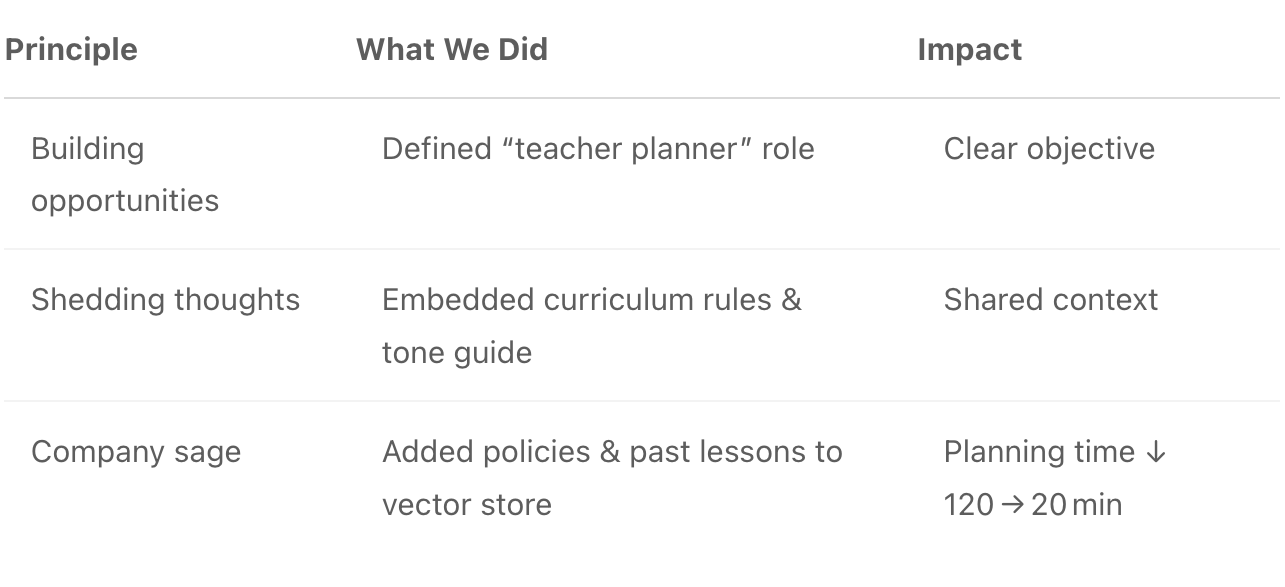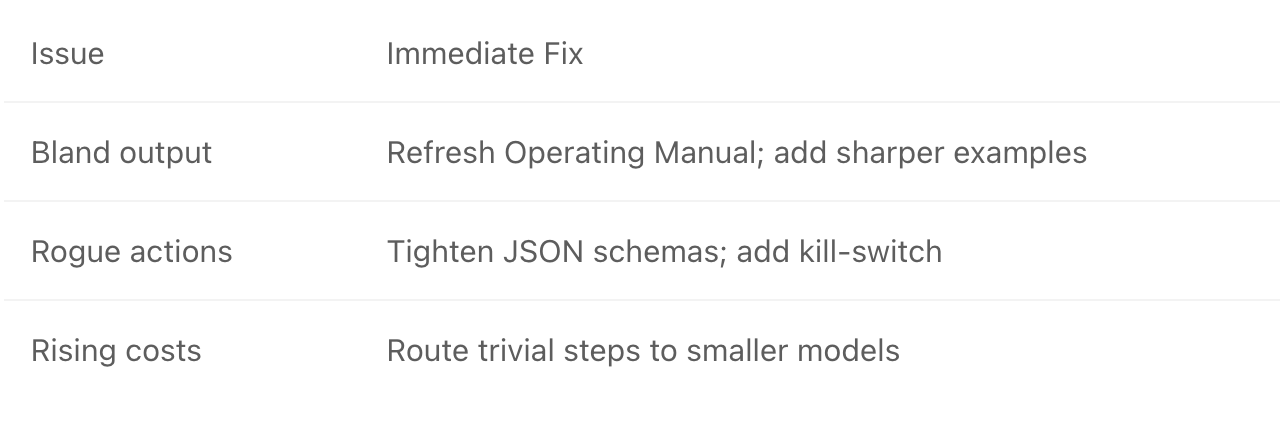Snapshot of Volume 1
“Prompt engineering is the art and science of making LLMs execute the tasks you desire with accuracy, reproducibility and quality.”
Three core muscles you built last time: Context · Iteration · Model choice. They turned chat apps into power tools. Level 2 is about building the power plant.
Why Level 2?
“The next level of prompt engineering goes above and beyond consumer apps… you will want to build your own apps or explore more complex integrations with your favorite tools.”
When you sleep, your digital twin should sprint. Level 2 replaces one‑off prompts with systems that remember, decide, and act.
The Three Core Principles
Below are your notes, fresh, simple examples that root each idea in practice.
I · Building Opportunities — Definite‑Optimist Lens
Looking at your business today, with the frame of mind of what it will become in the future requires a view of objectiveness. Your subjective thoughts of what AI should be cloud your judgement of what AI can be. Shed pre‑conceived notions and open your mind to a vastly differentiated future of work.
Building the future of your business through a definite optimist lens increases your ability to decide what to focus on. A definite optimist views the future as positive because they have a clear plan to make it better.
By necessity founders are optimists. But a common trait of failed entrepreneurs is indefinite optimism. Transform into a definite optimist: see AI as a tool that fits your grand strategy—a means, not the end.
Discerning where and how AI plays into your business is only you, the founder, can do. Let your optimism expand in line with what you can definitely allocate resources toward. Some of the most impactful ideas come entirely from shower creativity, not a list of pros and cons.
Example – Contract Pipeline
An LLM scans a legal contract, extracts key terms, queries a precedent database, summarizes findings, translates for overseas counsel, and files the packet. Small, cheap models chain together predictably—value created overnight while you sleep.
II · Shedding the Log of Thoughts — Codify & Communicate
Your definite view of your evolved company has to become tangible and shareable. Converting endless thought loops into written protocols forces clarity and makes action possible within real constraints. Writing is the greatest tool to clarify thinking.
The biggest obstacle is turning imagination into protocols the team can use. Prompt engineering is social intelligence for artificial minds: the same culture code you give humans must be given to models.
At this level you have combined human team members with your grand AI strategy. The codified approach lets you iterate quickly, see what the team needs, and stay aligned.
A great leader creates a “safe zone” where people explore technology without fear. As Simon Sinek writes in Why Leaders Eat Last, the role of a leader is to foster belonging so the team feels secure enough to innovate.
The role of a great leader will manifest itself in every evolution of an organisation. Either people feel secure and are willing to explore new technology, or they are afraid of change. You have the ability to steer that culture— weave a tight sense of identity, strip away politics, and give crystal‑clear purpose, both short and long term. Then the organisation is ready for a technological 10× evolution.
People think of themselves first, then they can step onto the pitch. As leader you must anticipate those anxieties without waiting to be asked. AI will trigger fears of replacement—your job is to paint a clear, human‑centred view of the future.
Example – Multi‑Channel Editor Agent
One “Editor” agent reviews blog posts, tweets, and newsletters. The workflow is fixed, but the agent enforces voice and style using an Operating Manual you embed nightly. One source of truth, consistent tone, zero drift.
III · Create a Company Sage — Context‑Rich Autonomy
You hold knowledge unique to your company; your moves are second nature. Yet time and energy constrain daily output. Cheap compute is ready to become a friend—as long as you feed it the information, codes, and principles of your power base.
Approach AI with sufficient context and secrets. Without them, the model is a cold slate; with them, it becomes a trusted lieutenant. Force your contrarian values into every prompt so replies never taste generic.
Example – Research Assistant Agent
The agent chats with you, decides when to search the web or internal docs, launches a translation‑storage pipeline, cites sources, and updates the database—all autonomously but within guardrails. Results land in your inbox before coffee.
The AI desire to please its user can drift into fancy, generic replies. The antidote is to inject your contrarian values into every prompt—replicating your worldview so the model stays on the edge of its seat, never fully certain it has it all figured out.
End‑to‑End Loop
Vision → Operating Manual → Embedded Memory → Orchestrator Reasoning → Tool Calls → Logged Outcome.
Master once; clone everywhere work drags.
Field Note — Alma
Quick Troubleshooting
Two‑Minute Readiness Test
Does your AI know your grand strategy?
Are vision docs version‑controlled and embedded?
Can the system ship work while you sleep?
If any answer wavers, revisit the three principles.
Final Prompt
Circle one task you loathe. Ask whether optimism, codified thought, and a company sage could erase it. If maybe, build the integration this week.
Your future company will thank you.
We create tools for those who see the future and want to live it now





